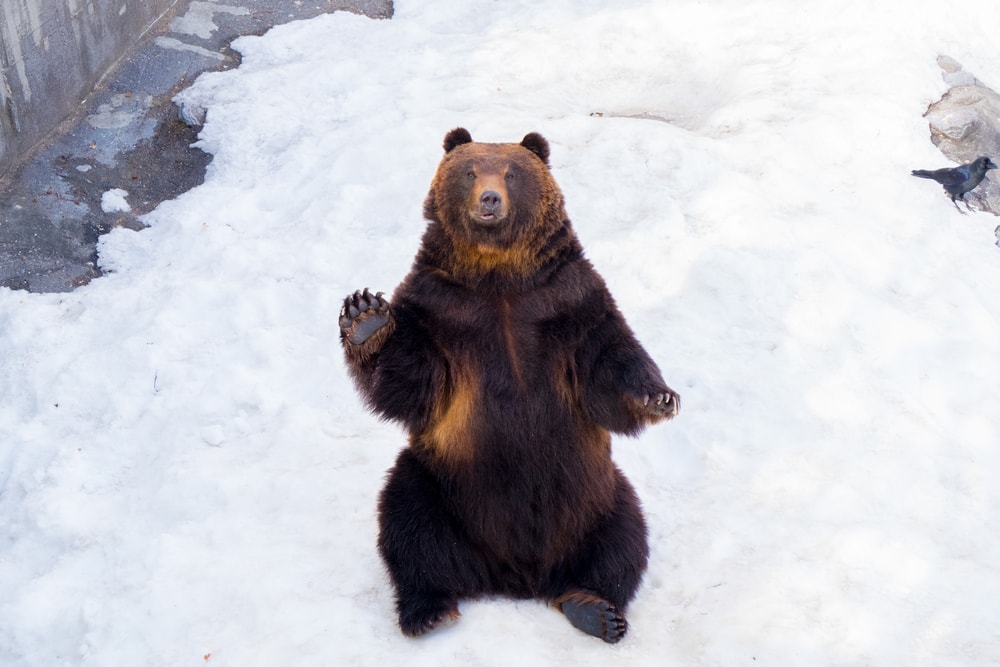
Japan is known for many things: the bustling streets of Tokyo, the beauty of Mount Fuji, the beautiful culture incorporating music, clothes, and art. However, you might not realize that Japan also has bears that populate the island.
There are only two bear species in Japan. These include the Japanese Black Bear and the Ussuri Brown Bear. The bear species have been the stuff of legend, myth, and some gruesome stories of attacks throughout Japan’s history.
Throughout this article, we look at each of the bear species found in Japan, fun facts about them, the history of their management, and the cultural myths and media around them. Then, on your next trip to Japan, you will be armed with all the facts and knowledge you could have about Japanese bears!
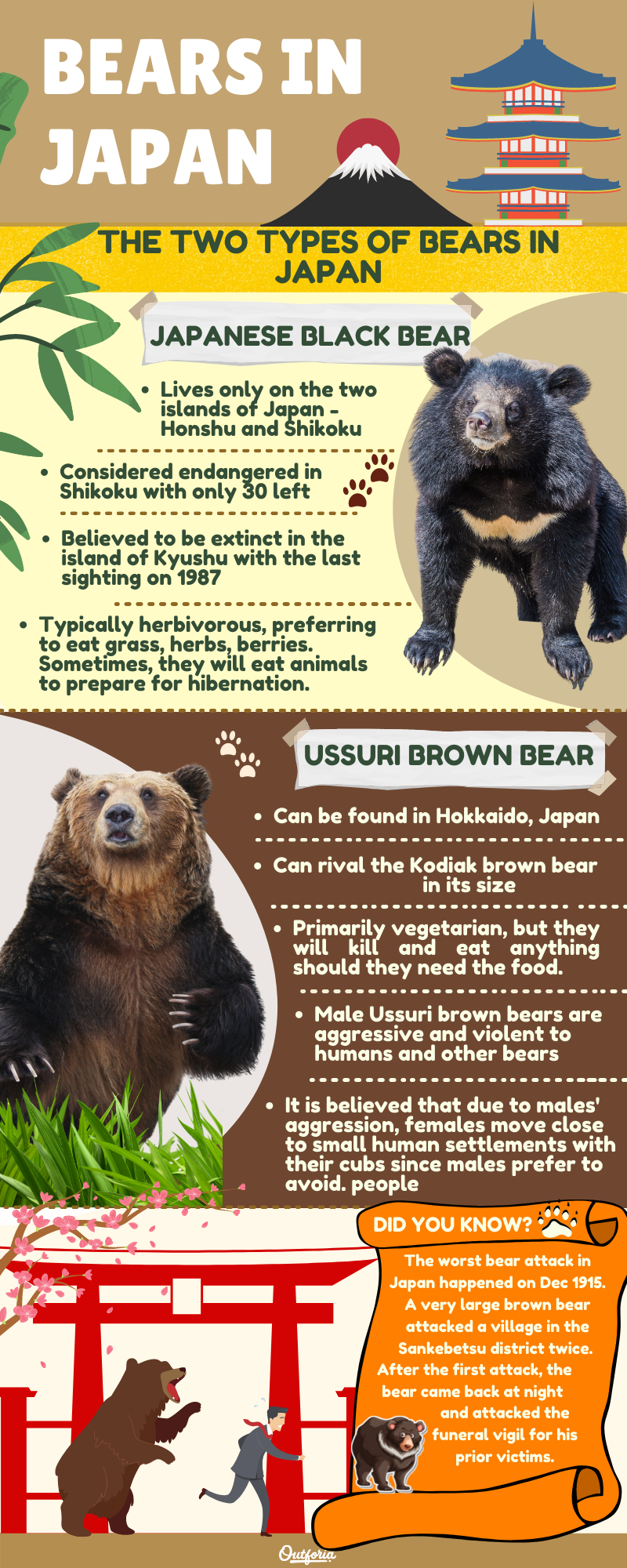
share this image on your site
<a href="https://outforia.com/bears-in-japan/"><img style="width:100%;" src="https://outforia.com/wp-content/uploads/2022/02/bears-in-japan-infographic.png"></a><br>bears in Japan <a href="https://outforia.com">Outforia</a>
Bears in Japan: Species Description and Fun Facts
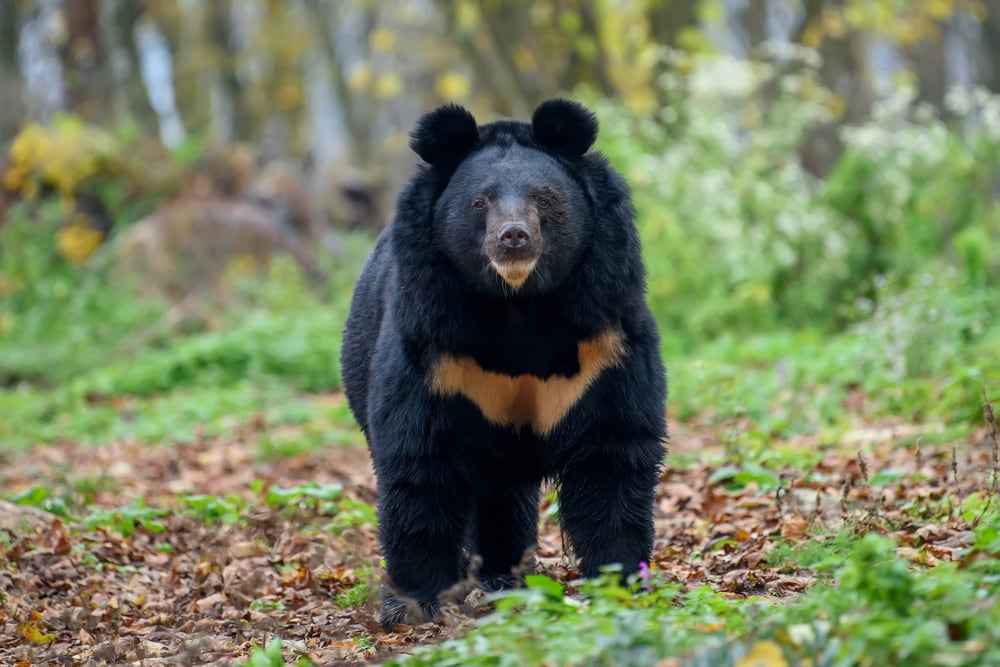
Historically, bears ruled areas of Japan such as Shikoku and Hokkaido. However, over the centuries and the development of Japan, the range of bears has been dramatically reduced. Black bears even became extinct in their native region of Kyushu by the time the 1950s came around.
Before understanding more of the relevance of the bears to Japanese culture and history, let’s take a closer look into each of these two species.
The Two Bear Species Living in Japan
The two bear species that have populated Japan for thousands of years include the Japanese Black Bear and the Ussuri Brown Bear.
1. Japanese Black Bear (Ursus thibetanus japonicus)
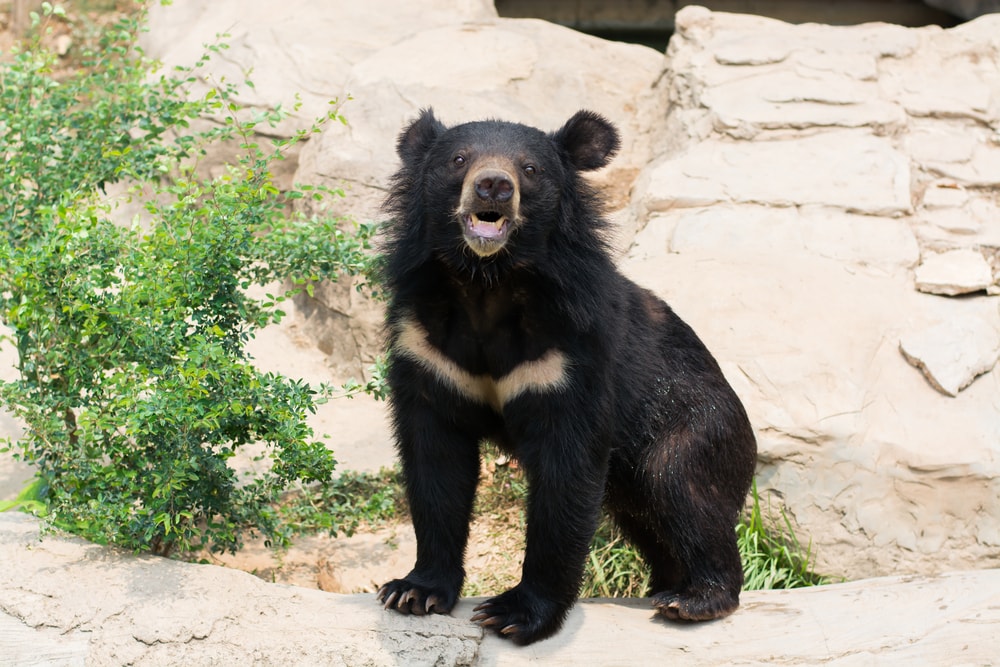
The Japanese Black Bear is one of the seven subspecies of Asian black bears. These live on the two primary islands of Japan. These include Honshu and Shikoku. Currently, there are about 10,000 black bears that live in Japan. However, the population that currently lives in Shikoku is considered endangered, with less than 30 individuals left.
Additionally, they are believed extinct on the island of Kyushu, another one on which they used to be a common native species. The last sighting of a bear there was in 1987, which has led researchers to believe they have been extinct on the island since before the 21st century.
This subspecies of the Asian black bear is smaller than most others. Males typically reach about 130 to 260 pounds (60 to 120 kgs), and the females will weigh a little less on average, between 88 to 220 pounds (40 to 100 kgs). They only stand about as tall as an average human man, with a length of about 47 to 55 inches (120 to 140 cm).
You can easily recognize these bears because of their deep black fur, round ears, and a creamy dash across the front of their chests. The bears are typically herbivorous, preferring to eat grass, herbs, berries, and nuts. Sometimes, they will eat animals to prepare for hibernation.
The bears prefer to live in high snow regions and southwestern low snow regions in Japan, wherever grasses and shrubs are abundant with berries. The forests in these areas rely on these species for seed dispersal. The bears move shrub and tree seeds 40% further than other creatures, helping plants spread throughout their suitability range.
2. Ussuri Brown Bear (Ursus arctos lasiotus)
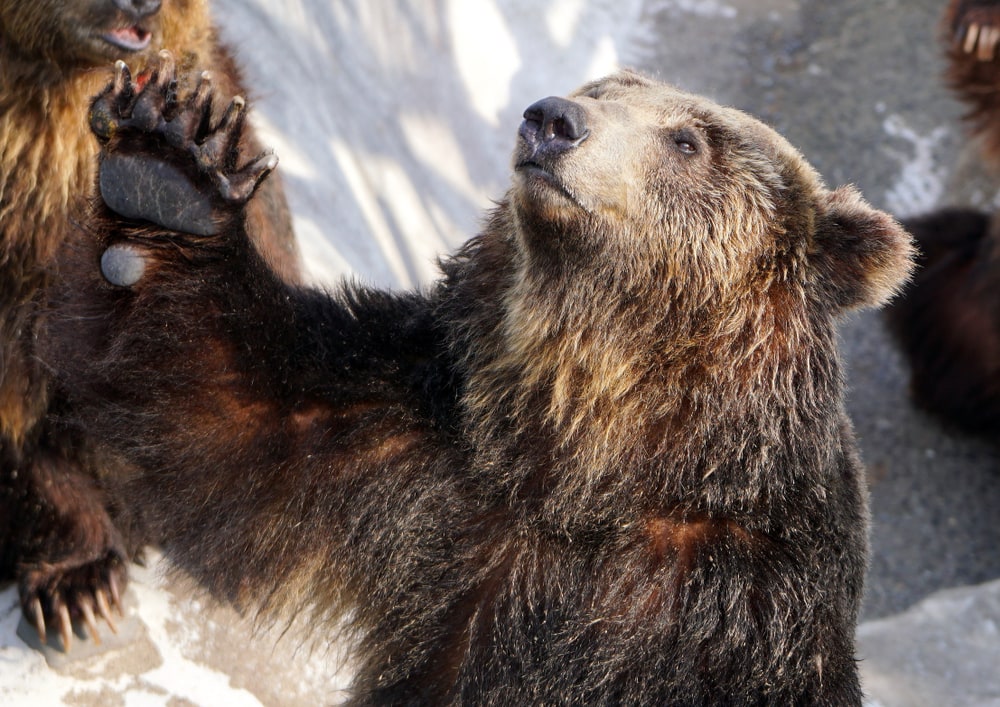
The Ussuri Brown Bear is the other bear species that lives across Japan. These bears are also called the Ezo brown bear and the black grizzly bear. Researchers are still trying to determine if these bears are a subspecies of a brown bear or a population of the Eurasian brown bear from millennia ago.
Don’t let their common name fool you. These bears are not a subspecies of the grizzly bear. They are brown bears through and through, albeit one of the largest kinds of brown bears in the world. The Ussuri brown bear can even rival the Kodiak brown bear in its size.
In terms of its appearance, the Ussuri brown bear looks similar to the Kamchatka brown bear with a slightly different skull formation. It is also somewhat darker, with some people thinking it is completely black.
The male Ussuri brown bear is aggressive and violent towards both people and other bears. It is theorized that because of this known aggression, females will move close to small human settlements with their cubs since males prefer to avoid people.
About half a century ago, this behavior was noted since the females and cubs would approach fishermen without any aggression and stay near them throughout their working days and nights.
These bears are omnivorous. They are primarily vegetarian, but as large predators, they will kill and eat anything should they need the food. It isn’t typically until autumn that they will begin to increase their diet of mammals, fish, and birds to prepare for hibernation.
One of their only predators is the Siberian tiger. The tigers will target the younger bears, although they will sometimes pursue the adult females. This generally happens during the winter while the bears are trying to hibernate.
Due to the speed and agility of the tiger, bears are generally afraid of them, trying to avoid them should they run across a tiger trail. Although the bears stand a chance against their attackers, it is more likely that the tiger will win in the battle.
You may also like: Learn the 8 Amazing Types of Bears Across the Globe: Complete with Images, Facts, and More!
Fun Facts About Bears in Japan
1. The oldest living Asiatic Black Bear died in captivity at the age of 44 years old.
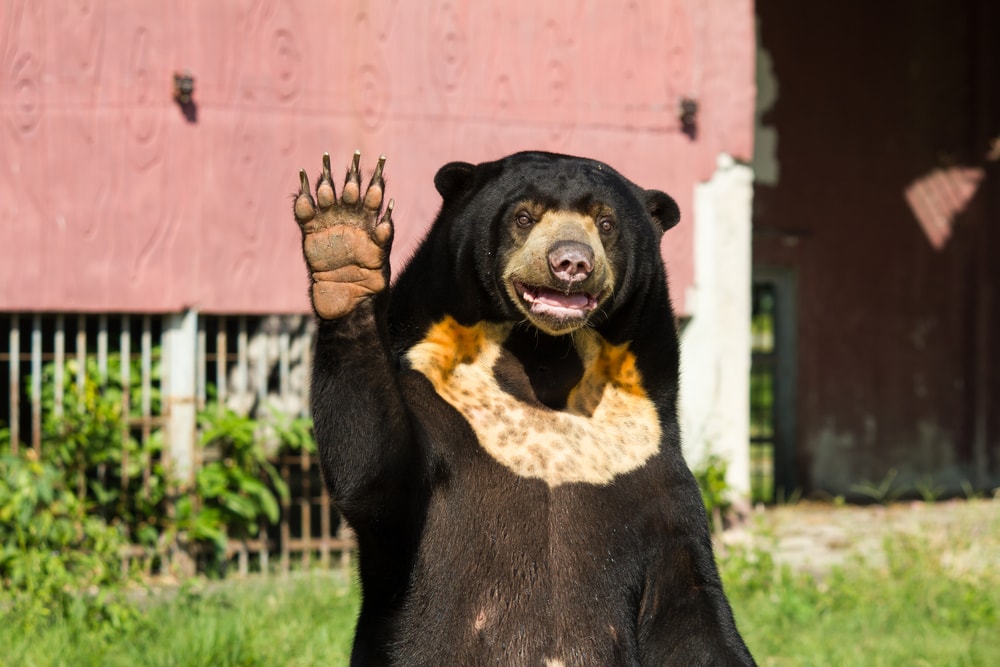
Black bears are known for being relatively long-lived. In the wild, their average lifespan is about 25 years old. However, in captivity, their average lifespan increases to about 32 years. The oldest black bear currently recorded died in captivity at 44 years old.
2. Black bears can run up to 25 mph (40 km/h).
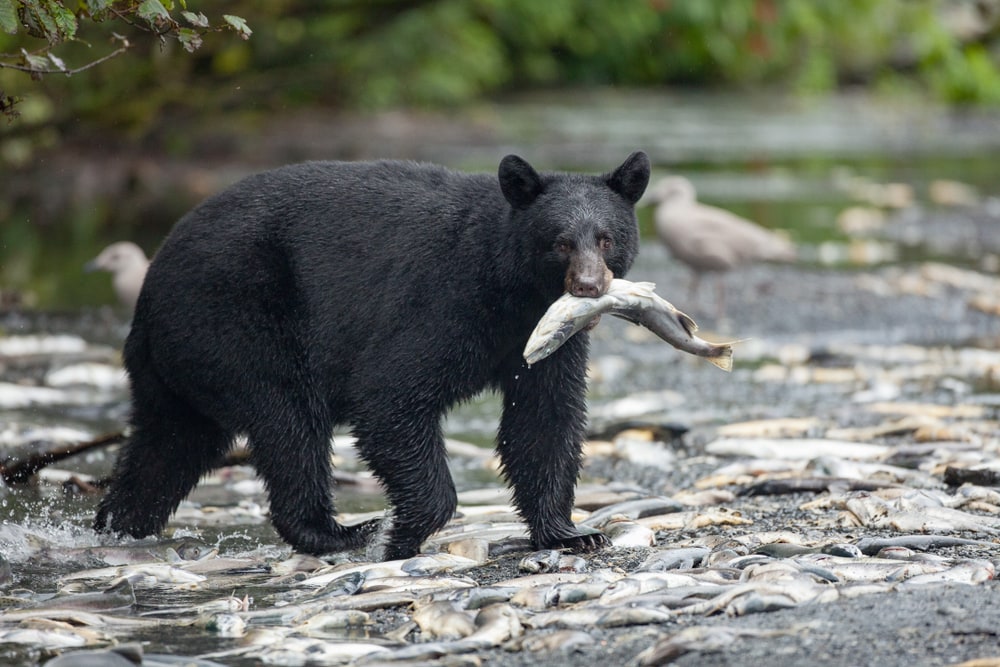
Most people think of bears as being lumbering, slow-moving creatures. However, they can move quickly when needed. When running at full speed on all fours, they can reach a speed of 25 mph.
3. Bears’ claws are formed to help them climb trees quickly.
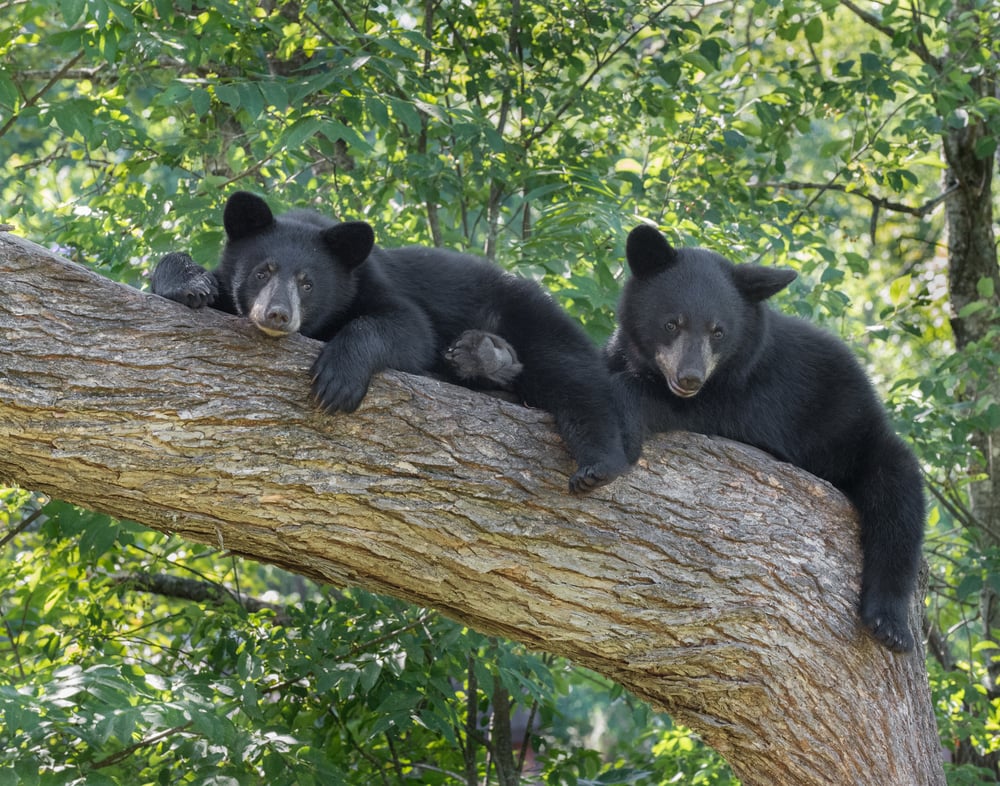
Black bears are also very good climbers with such a strong upper body that they can scale trees even if their hind legs are injured. In addition, their claws help them to find purchase on a tree. This ability keeps them safer from Siberian tigers than their permanently grounded brown bear cousins.
4. Asiatic black bears are one of the most bipedal of all bear species.
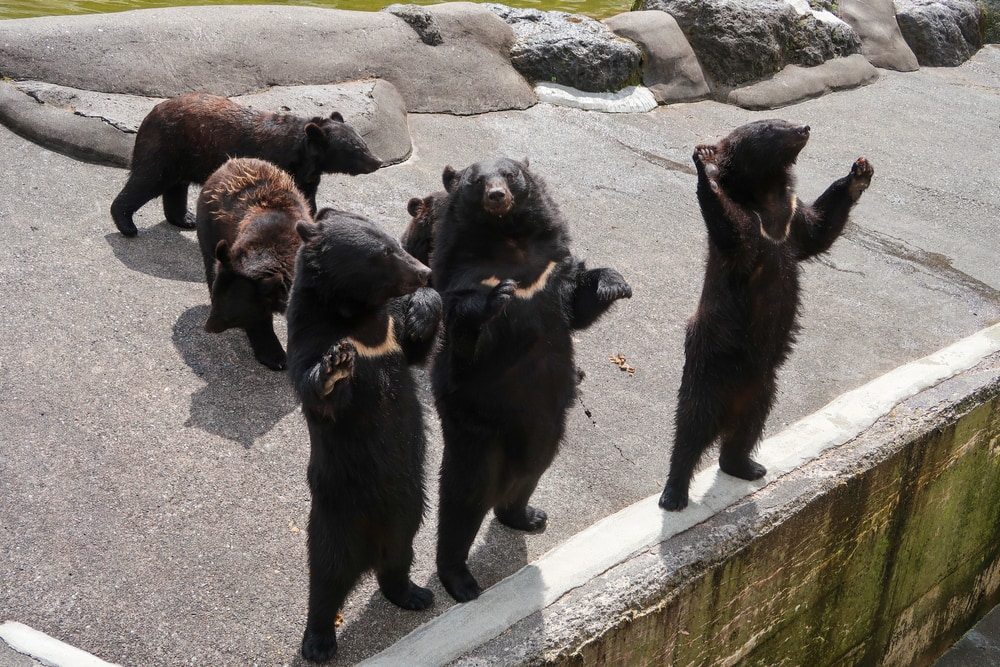
Most of the time, these bears will walk on all fours. However, like many other bear species, they will typically walk on all fours. You can take a hint from their behavior if they stand up on their hind legs since this means they are getting ready to attack.
However, these bears are also quite bipedal. The longest they have been known to walk on their hind legs extends further than a quarter-mile.
You may also like: Learn the Different Types of Cherry Trees, from Japan to the US: Complete with Facts, Photos, Descriptions, and More!
Bear Wildlife Management History in Japan
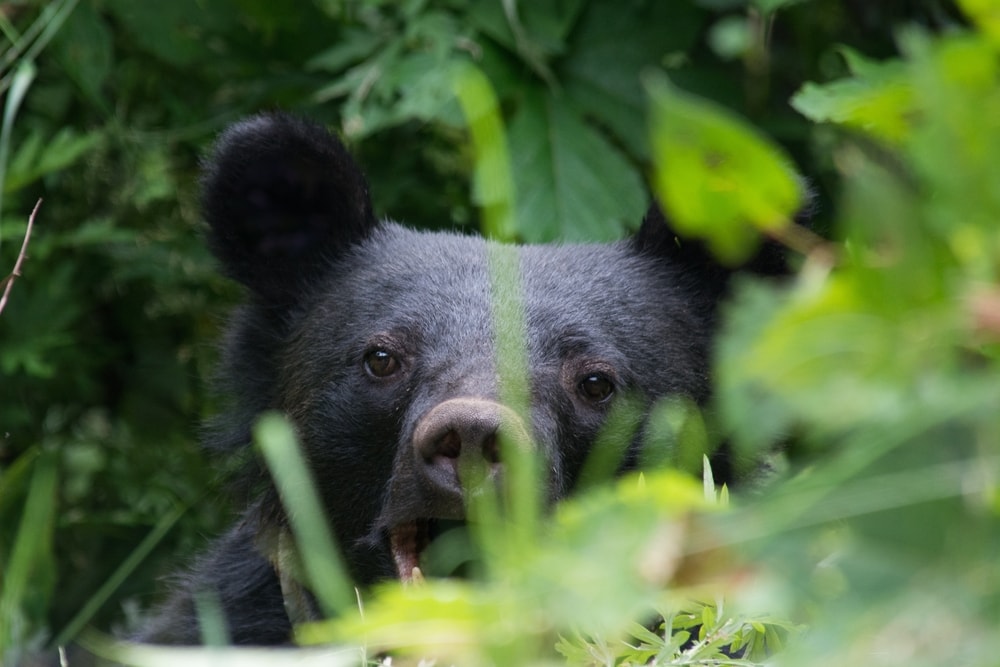
One of the biggest threats for bears in Japan is their monetary desirability. Many bear parts are quite valuable on the black market. This has led to the extinction of both species on several of the islands they used to inhabit.
Bear management in Japan has been quite challenging due to the lethal attacks each year. This has created quite a conflict among popular methods to protect the bears, although more research on preventive conflict methods is being done.
Even so, more than 1,000 bears are killed each year in the name of damage control actions. In a way, the current system is working somewhat well since the bear populations have sustained themselves during the last several decades.
However, the Japanese government is still looking for further solutions that don’t involve completely wiping out the bear populations in the country. The reason for this is that the damage control still hasn’t reduced the damage and cost of lives to an acceptable level. Each year, people are mauled and property damage mounts up to millions of yen.
Some of the suggested changes include encouraging farmers to put up electrical fences. However, this is really only a band-aid over a gaping wound of conservation. There is only just starting to be funding for research projects on preventative actions to take. This is to save the bear populations from the fate of the extinct populations from Kyushu and Shikoku.
You may also like: Learn What a Bite Force is and the Animals With Strongest Bite Force: Complete with Images, Facts, Descriptions, and More!
Threats from Habitat Loss and Climate Change
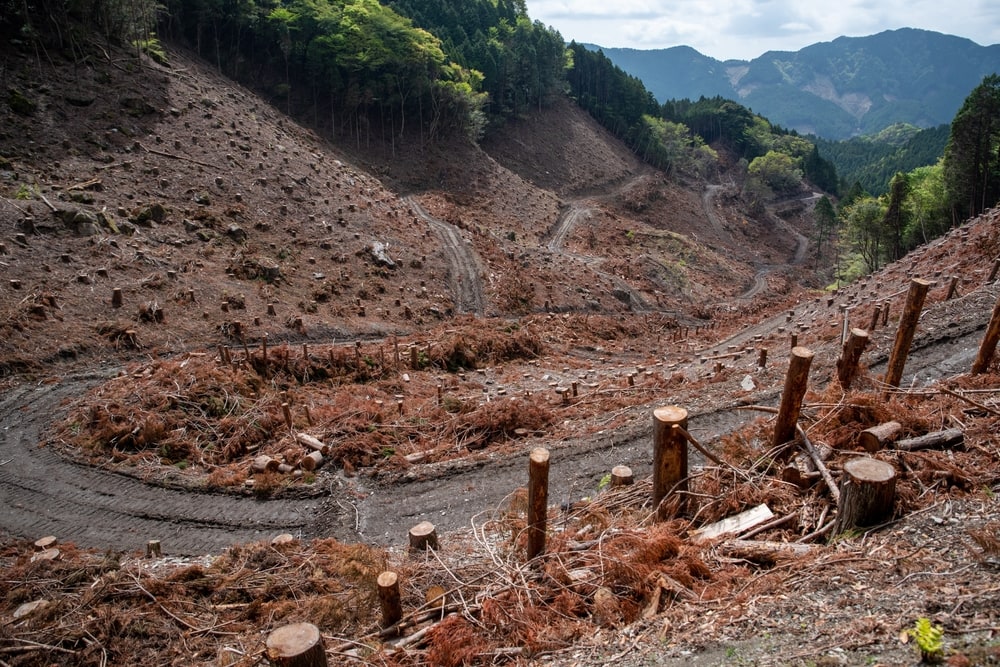
Another one of the more significant threats to this bear’s population is habitat destruction causing a reduction in carrying capacity for the species. There are movements to help protect some of the more valuable habitats for the bear, stopping villages from infringing on forest boundaries.
Another significant threat to specifically the black bear populations in Japan is the timber industry. Not only do they kill the trees that the bears eat during the winter and rely on for coverage, but they also kill the bears they encounter to keep their teams of loggers safe.
The Asian black bears suffer more from deforestation than the Ussuri brown bears. This is because Ussuri brown bears prefer to live in wide-open spaces instead of forests.
As it goes, the Japanese Black Bear subspecies will likely be gone within the next 100 years if they continue to decline at the current rate.
You may also like: Learn the Different Types of Habitats You Can Find on Our Planet: Complete with Descriptions, Images, and More!
Cultural Myths, Legends, and Media Coverage
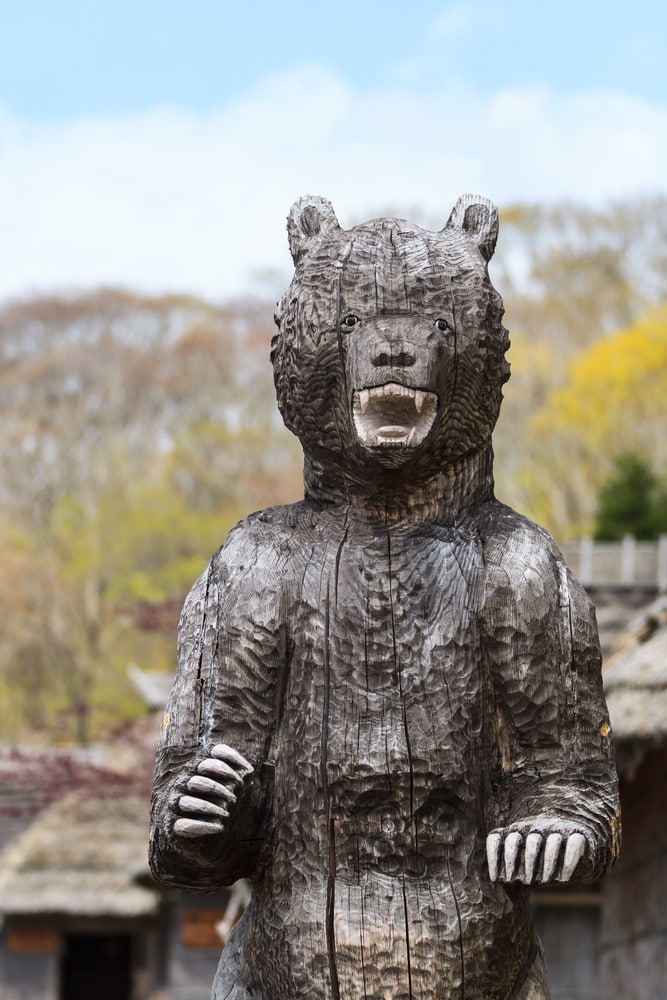
There are many myths and other cultural associations with these brown bears. One of the earliest cultural associations with the bear in Japan is with the Ainu people, an indigenous group that lived across many of the islands that belong to modern-day Japanese and Russian governments. They are believed to have come to Japan sometime in the 13th century.
The Ainu practiced arctolatry, or a form of bear worship. They believed the bear held special importance to their gods, functioning as a chosen method of deliverance for the people. They would eat their meat and drink the bear’s blood during certain religious ceremonies.
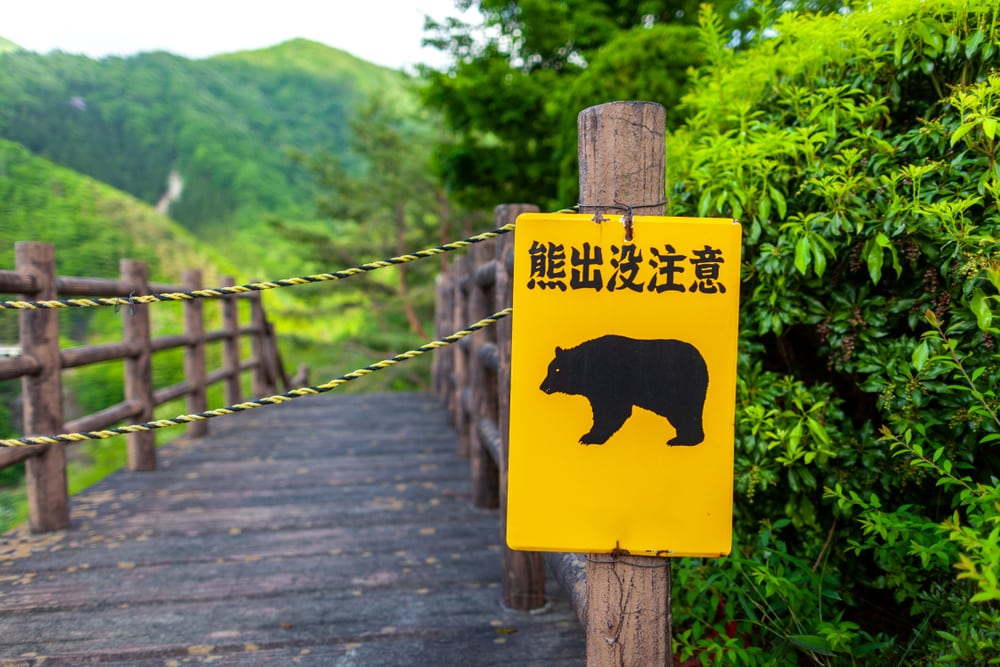
Much of their more recent news headlines have been about bears attacking humans. This is especially pertinent when it comes to the Ussuri brown bear. Throughout the first 57 years of the 20th century, bears attacked more than 400 people. Out of these, 141 died from the bear attacks, and another 300 people were injured.
More recently, from the years 1962 to 2008, there were about 86 total attacks and 33 deaths from bears around Hokkaido.
Some of these have been widespread, featuring a bear on a rampage through a village or part of a city on Hokkaido. One of the worst of these happened in December 1915 in the Sankebetsu district on the island. It was the single worst bear attack in the history of Japan. Seven people died and the bear injured three others.
The bear that attacked the village was a very large brown bear that attacked the village twice. After the first time, it came back at night and attacked the funeral vigil for the prior victims of its first attack. It is because of incidents like these that the Japanese believe bears to be evil man-eaters.
The Asiatic black bears are less of a threat than the Ussuri bears. They often only attack people during the spring when villagers go out to collect wild bamboo shoots, which the bears also like to eat. Compared to the 86 attacks from the Ussuri bear, black bears are much less aggressive. From 1985 to 2004, only two black bear attacks occurred.










